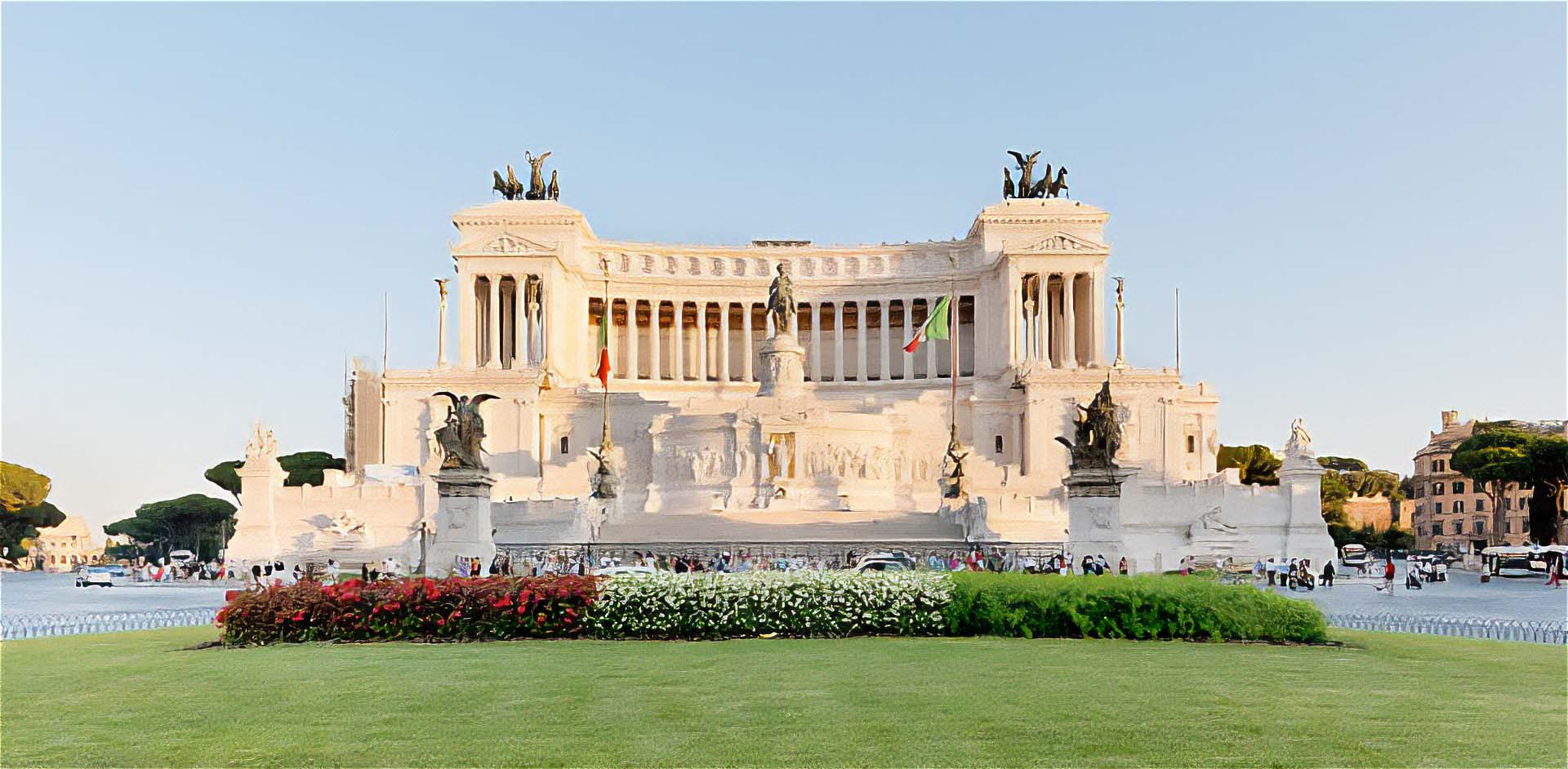

Before your trip, you should do some research on the many temporary exhibitions in important sites such as Palazzo delle Esposizione, the Chiostro di Bramante (both with great cafes), MAXXI, and Scuderie del Quirinale.
For galleries, Mattia De Luca Gallery, Anna Marra, Valentina Bonomo, Lorcan O’Neill, Francesca Antonini, Gagosian, Sant’Andrea de Scaphis - Gavin Brown, and T273 are a good start.
Our international ceramics center, CRETA Rome hosts exhibitions of current resident artists 8-10 times a year. Check our website to see what is on or contact us for an appointment to stop by our studio.
Exibart, the database of current exhibitions in Italy will also list shows and any other openings each day.
Of course, mix it up as you wish!
For accommodation, there are a myriad of choices, from 5-star hotels to hostels and Airbnbs. We recommend monasteries for an authentic experience in the city. Try the Monastery Stay website and contact them directly for the best price. Be aware that some have curfews.

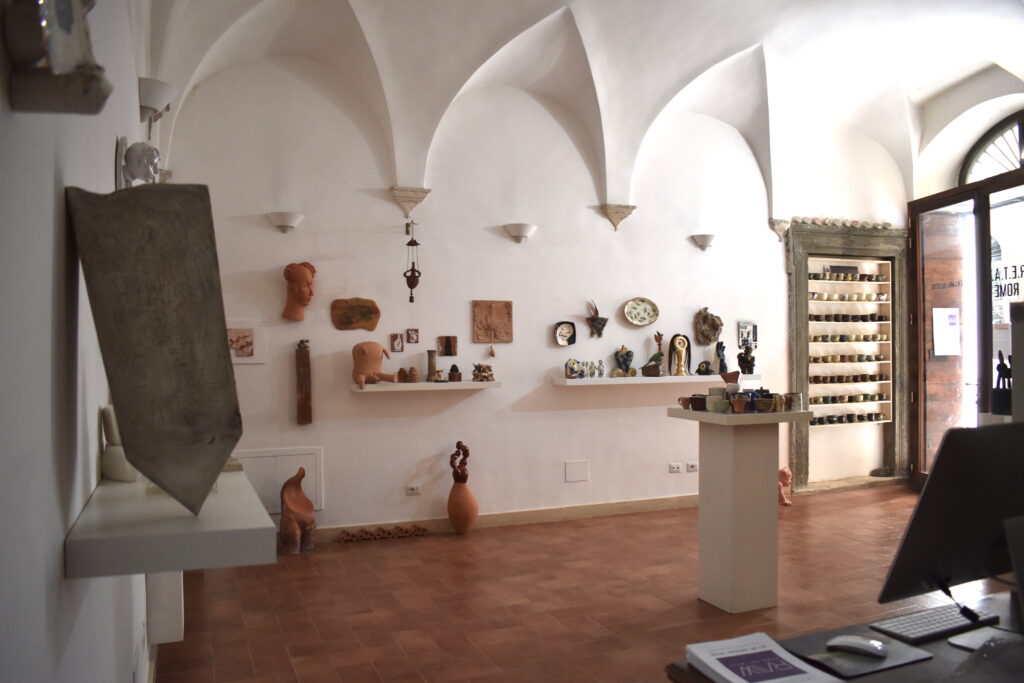
Begin in the heart of historical Rome with the Museo del Palazzo Venezia. In the section dedicated to ceramics, a long corridor of Asian and European porcelains leads to the area dedicated to Italian Renaissance maiolica including a complete set of pharmacy albarelli.
Beyond is an extraordinary collection of terracotta maquettes by the Baroque masters Bernini, Algardi, and later 18th-century sculptors. Don’t miss the ceramic pavements produced in the time of Mussolini’s occupation of the palace that conjoin Renaissance and Fascist imagery.

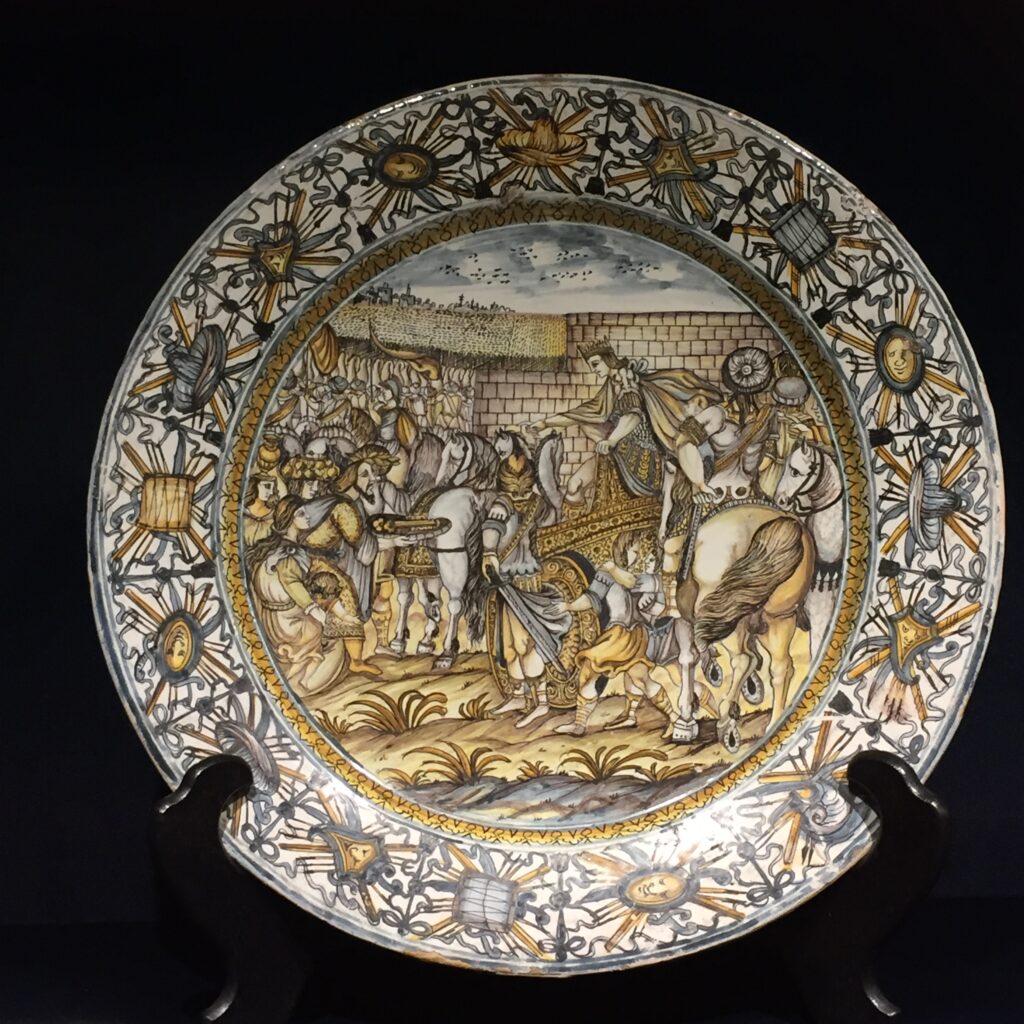
Relax in the “secret garden” of the palazzo before taking advantage of your ticket that includes access to the panoramic views of Rome offered by the elevator to the top of the Victor Emanuele Monument (last entry 6:45pm).
Diagrams serve as guides to the monuments spanning centuries that extend in every direction: to the south: the Forum, Colosseum, and beyond to St John Lateran; the imperial forums and the Quirinale palace to the east; straight ahead, the domed roof of the Pantheon and the northern entrance to the city at Piazza del Popolo; the square dome of the synagogue, Trastevere and the Janiculum hill to the west.

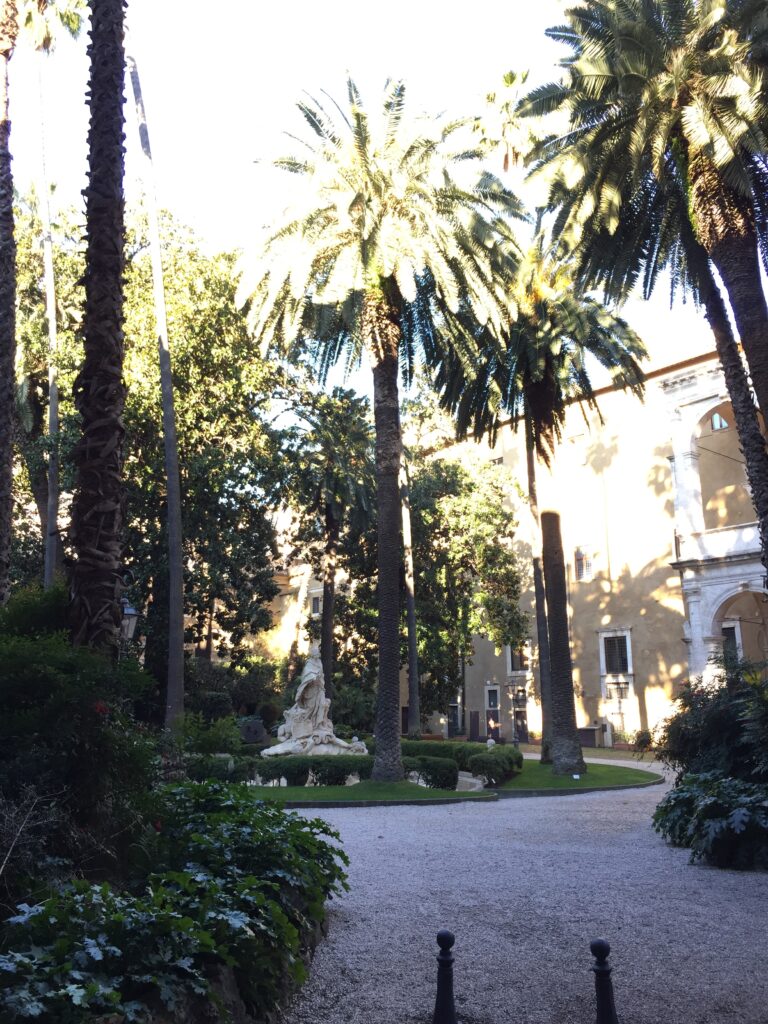
Take the side stairs from the Victor Emanuele Monument to the Piazza del Campidoglio, the center of the Musei Capitolini complex, the oldest public museum in the world (last entrance 6:30pm). Alongside the important bronze and marble works, you will find Greek, Etruscan, and Roman pottery, including the oldest complete signature of a Greek artist, Aristonothos (“best bastard”) dated to 650 BC.
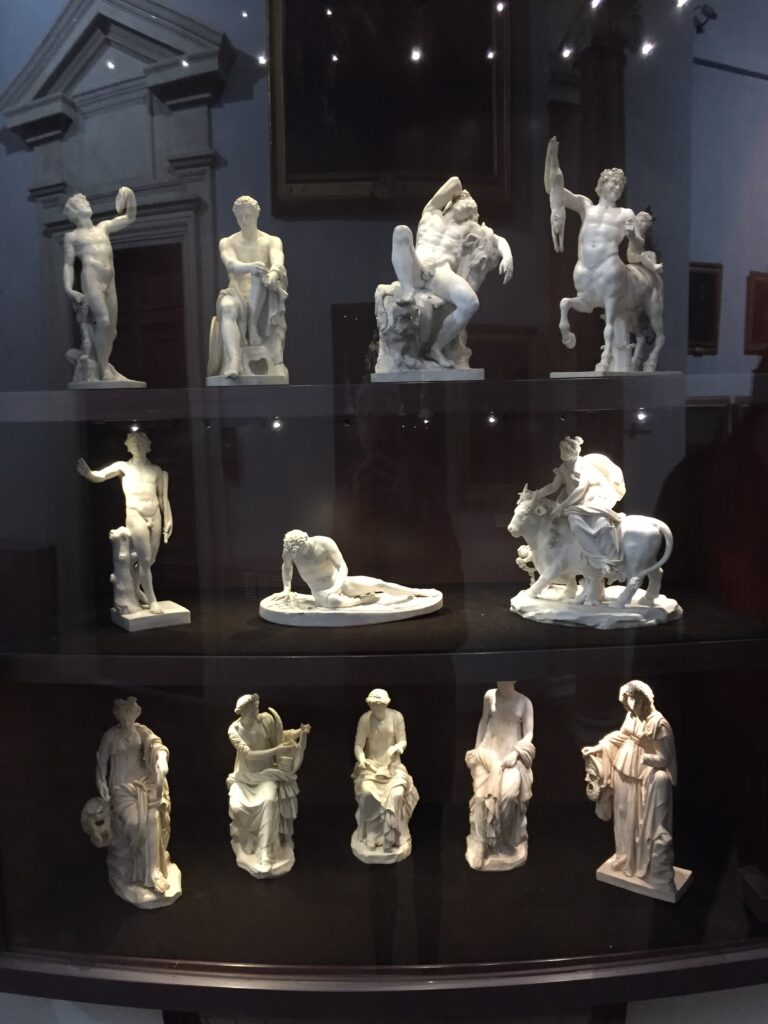
Terracotta architectural elements and sculptures are scattered around the oval exedra that houses the Marcus Aurelius bronze equestrian statue and several of the original donations of Pope Sixtus IV that constituted the foundation of the collection.
The last room of the Pinacoteca (picture gallery) on the first floor houses an extensive collection of Asian and European porcelains including Volpato’s works after the antique created for 18th-century Grand Tourists.
On your way to the Terrace cafe for a quick coffee or a Prosecco/Spritz don’t miss the reconstructed 2nd-century BC terracotta pediment.
TIP: A combination ticket includes the Centrale Montemartini, where antique statuary meets industrial archaeology in the first electrical plant in the city. Leave time to explore the Ostiense and Garbatella neighborhoods for street art and abundant restaurants.
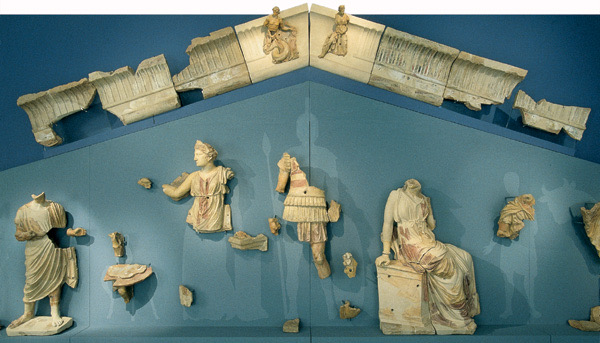
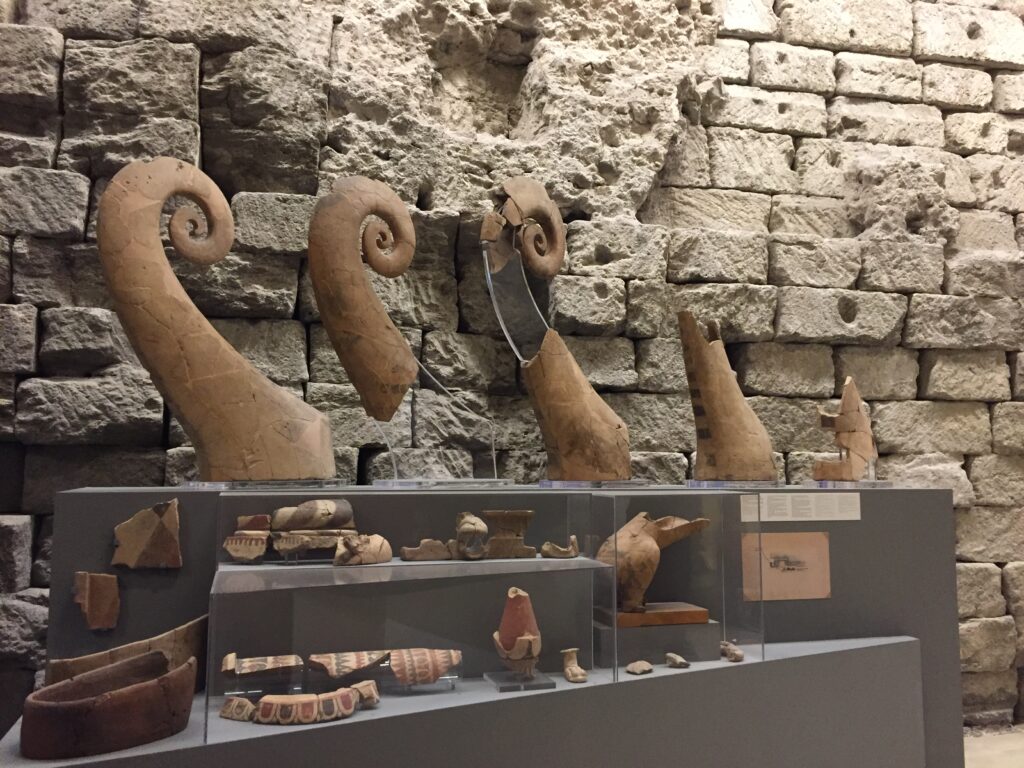
From the top of the Capitoline Hill, wind your way down to the via dei Fori imperiali. The walk offers vistas over the imperial forums and extensions. As you walk towards the Colosseum, note the Renaissance kiln in the Forum of Trajan on your left.
Halfway down, turn via Cavour and keep your eyes peeled for the outdoor seating area of the pizzeria Alle Carette, tucked in an alley on the left. After an appetizer of suppli (fried rice balls) and fiori di zucche (fried zucchini flowers) indulge yourself on a Roman thin-crust pizza. Walk off the carbohydrates by heading to the illuminated Colosseum nearby.
If you prefer a restaurant meal in the historical center, there is a range of economical and selective options for dining including wine bars (the oldest, Cul de Sac, or Enoteca Corsi), or restaurants such as Renato e Luisa, il Ditirambio, La Quercia. For old-fashioned Italian food head to Settimio al Pellegrino, Da Tonino behind Chiesa Nuova, or d’Augustarello in old Trastevere.
Open Baladin, where craft beers were introduced to Italy, is a good choice if you are dying for a hamburger. If you want a fun place to stop for a glass of wine before/after dinner (most restaurants open at 7:30 p.m. at the earliest), il Vinaietto offers an extensive list of wines by the glass at reasonable prices. Not much seating, so clients spill out into the street.
(5 museums in all, a combination ticket gives you access to 5 different museums in 7 days, check the website for possible closures for restoration)
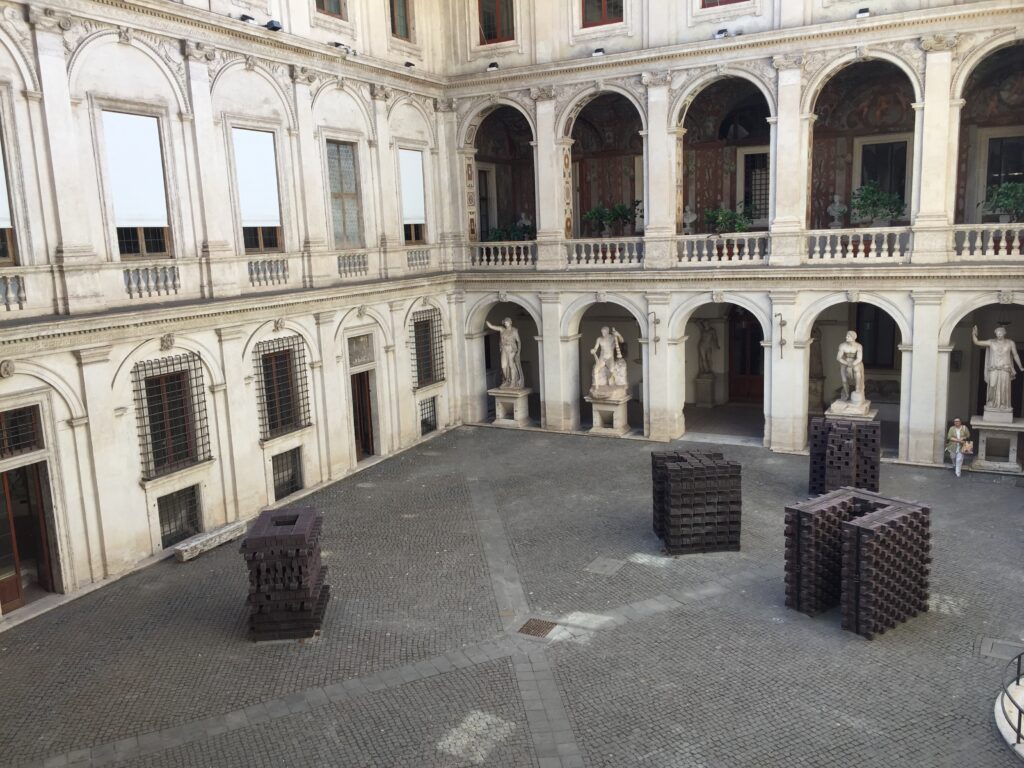
These museums open a bit later than most, so have a leisurely breakfast. Depending on where you are staying, opt for Caffè Greco (Spanish Steps), and Caffè Doria Pamphilji (the Corso). Our favorite is I Dolci di Nonna Vincenza (Campo dei Fiori) for Sicilian specialties and the plus is that there is no charge for seating.
Or if you are in Rome for the weekend, make a quick stop at the Mercato di Campagna Amica off Circus Maximus. This former’s market offers organic and local fares in a pleasant setting. From there you can walk back over Capitoline hill and down onto the via dei Fori Imperiali on your way to the first museum.
The 2nd-century Roman bath complex of Diocletian (Terme di Diocleziano) has sections that focus on inscriptions and the early history and protohistory of Rome declined in terracotta ash urns in the form of vessels and huts. It includes a selection of terracotta votive sculptures, from body parts to 2/3 life-size seated females to larger-scaled busts of goddesses.
Make certain to visit the ancient halls of the bath filled with Roman sculptures and monuments and the cloister designed by Michelangelo.

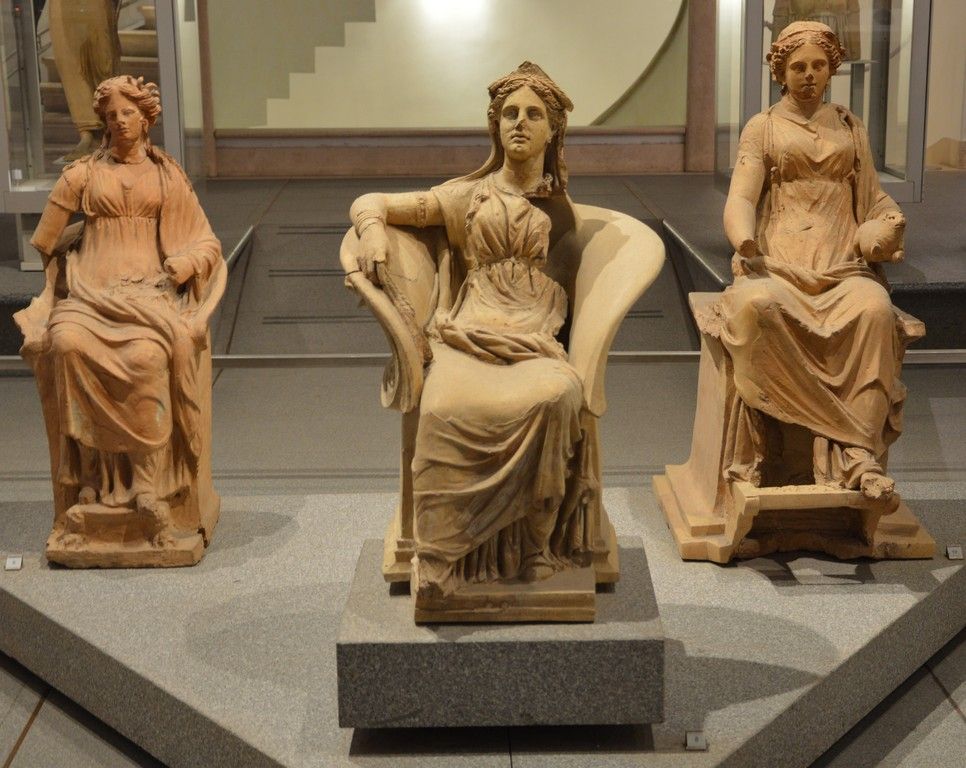
You need to exit to visit the newest museum, founded in 2022.
The Museo dell’arte Salvata (Museum for Rescued Art) has changing exhibitions of works exported illegally and then repatriated. Most recently, the terracotta Sirens and Orpheus returned by the Getty Museum were a star attraction.
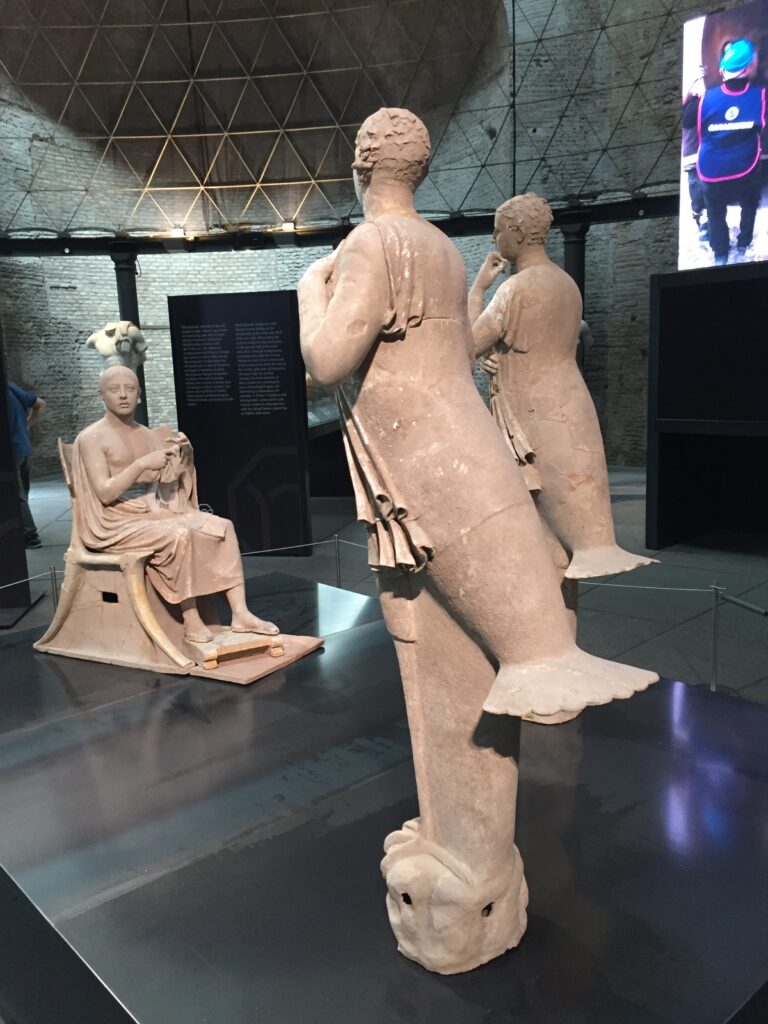

Check out the Mercato Centrale in the Roma Termini train station with an array of choices from pasta to burgers to pizza washed down with a range of beverages.
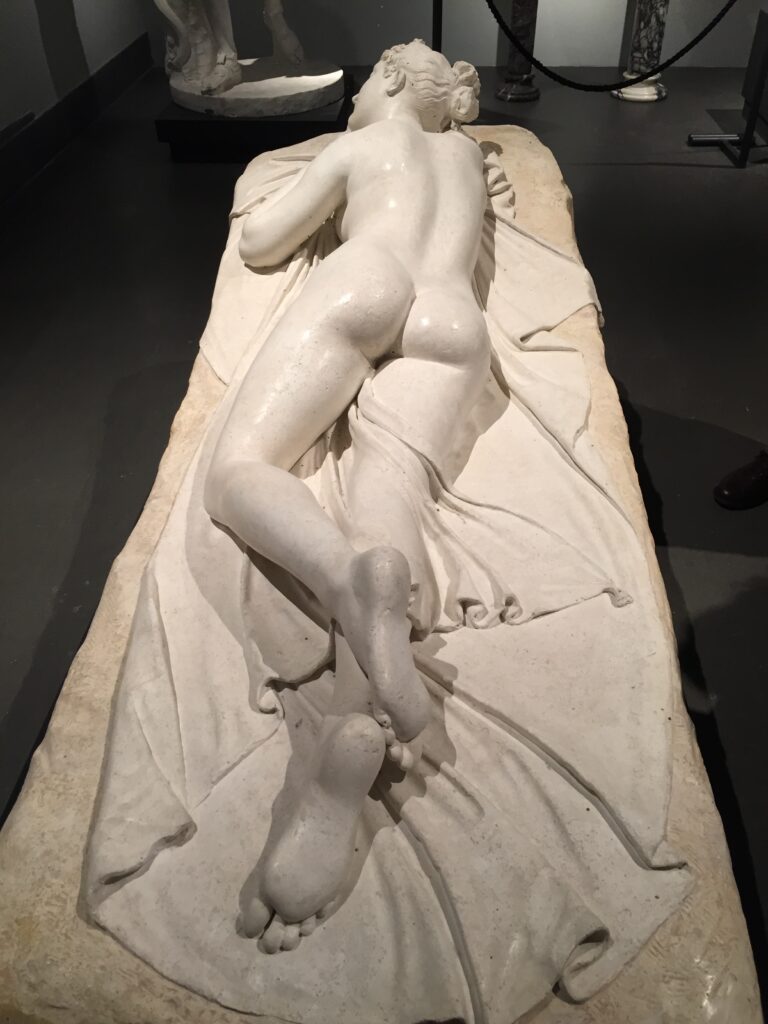
PALAZZO MASSIMO is across the street from the station, dedicated to important marble and bronze sculptures from the Republican and Imperial ages. Contemporary frescoes and mosaics fill the top floors. No ceramics here but an alternative to the Crypta Balbi (see below).
Head back to piazza Venezia and then wind your way through back roads to the Crypta Balbi (currently closed for restoration (2023), on the site of an Augustan-period theater that became a center of trade and production from the 5th through 9th centuries.
Excavations here changed the history of Medieval Rome as demonstrated by a range of storage jars (amphorae), fine wares, and a chronology of glazed pottery from the 7th through 18th centuries. The Mercati di Traiano Museo dei Fori Imperiali also has a splendid collection of amphorae displayed by typology.


Head to Campo dei Fiori where you can find filled focaccia sandwiches at the Forno di Campo dei Fiori to savour while seated on one of the fountains in piazza Farnese or if you prefer air-conditioned tables, order made-to-order sandwiches at the Ancient Pizzicheria Ruggeri.
The walk to the site of the seats of the National Museum of Rome, Palazzo Altemps, will take you through piazza Navona. This museum’s focus is on private collections from the Renaissance to the early 20th century.
In addition to famous Greco-Roman works from the Ludovisi collection and others, the ‘encyclopedic’ archaeological collection of Evan Gorga is of interest for its terracotta architectural elements and pottery. Don’t miss the excavations on the ground floor with the display cases filled with maiolica pottery.
Pass by the Pantheon on your way back to your hotel. Two of the best coffee spots are nearby: Sant' Eustachio Il Caffè for espresso or cappuccino; La Casa del Caffè Tazza d'Oro for granita di caffè (sugared iced expresso plus whipped cream).
Or if you prefer gelato, try Fata Morgana (Campo dei Fiori), Corona (Largo Argentina), Gelateria al Teatro (piazza Navona)
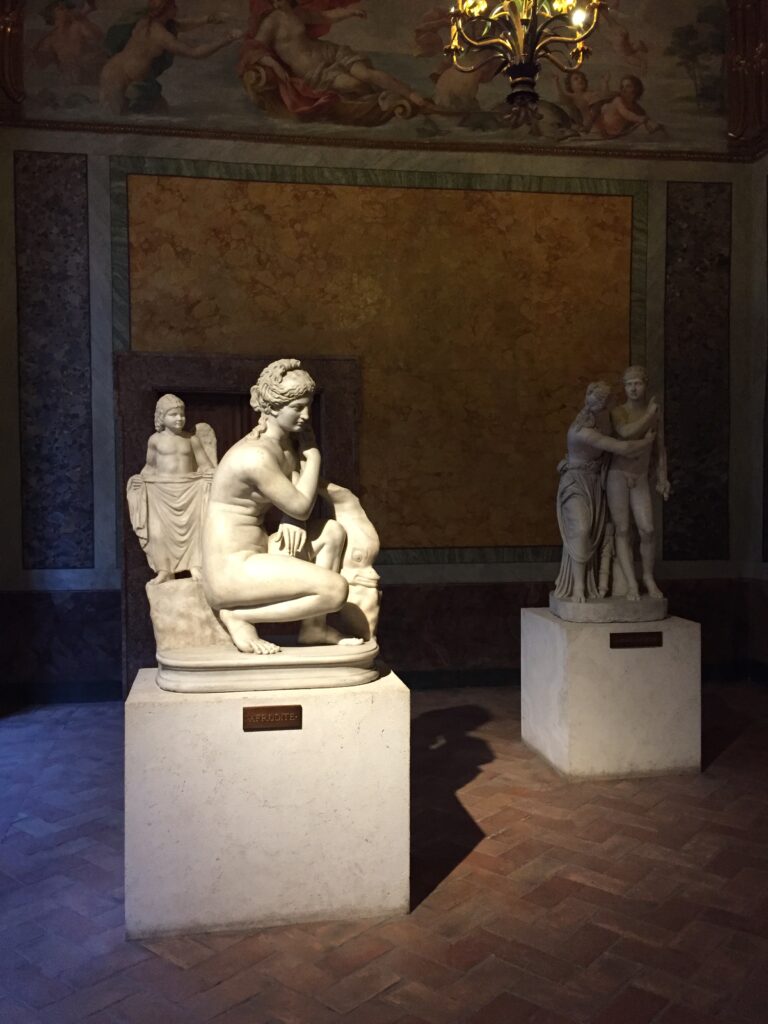
The Jewish “Ghetto” is a perfect place to have a meal that transports you back to the origins of this community that considers itself the oldest in Europe. Tucked in a quiet piazza behind the main street of touristy restaurants, you will find Sora Margherita (reserve in advance). Try the “Carciofi alla Giudea” (fried artichoke) and pasta with ‘cacio pepe e ricotta’ (pecorino, black pepper, and ricotta). Their ricotta and visciola (sour cherry) cake is to die for (or do take away from Boccione in the main square.
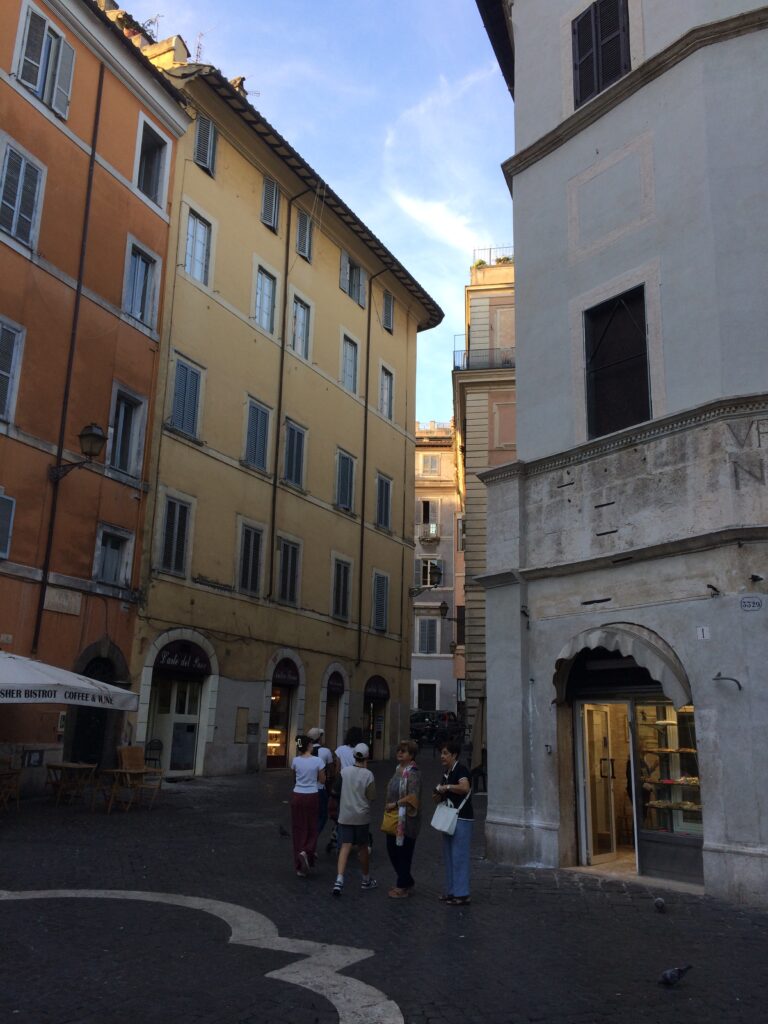
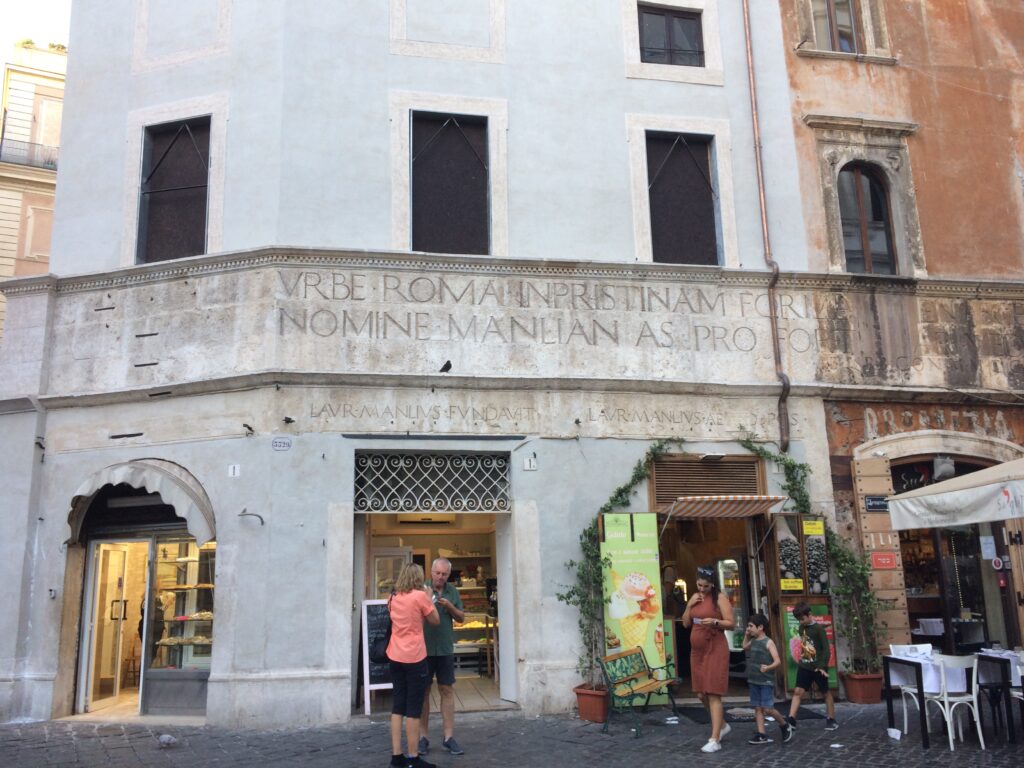
Get in the mood with a quick coffee or leisurely breakfast at the Caffè Tadolini Canova, just past the Spanish Steps via del Babuino.
In January 1818, Antonio Canova (at the height of his European fame) signed a contract for property destined solely for the practice of sculpture for his favorite pupil Adamo Tadolino. This caffè in the former sculpture workshop still houses the plaster working models of this neo-classical sculptor. From there, walk through the Villa Borghese Gardens to the Villa Giulia.
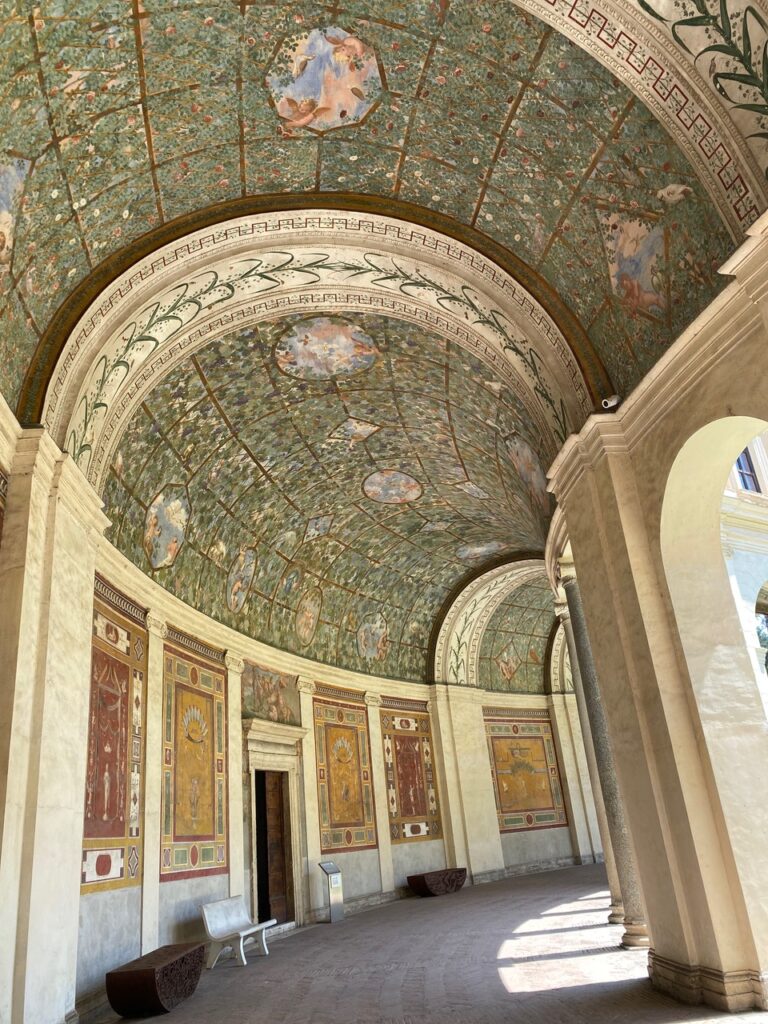
The countryside villa of the Renaissance Pope Julius III houses the Museo Nazionale Etrusco di Villa Giulia Villa which contains pre-Roman finds from throughout the Latium, southern Etruria, and Umbria.
Friday, Saturday, and Sunday, from 2 to 7 PM, with the exception of the first Sundays of the month and holidays, you can also visit the Villa Poniatowski nearby with important works repatriated to Italy.
On the ground floor of the Villa Giulia, the focus is on grave goods of the Villanovan and Etruscan periods with an abundance of terracotta pottery and ash urns, imported Near Eastern and Greek pottery and Etruscan bucchero ware. Wealthy Etruscans re-created Greek culture, filling their tombs with all the accoutrements of the Greek symposium: imported Greek vases take their place beside bronze vessels, armour and local wares.
A highlight is the terracotta “Sarcophagi of the Spouses” with the couple reclining on a kline (the bed used for dining). The Greeks would have been shocked by the inclusion of a woman in what was traditionally a male domain in the Greek world. Other sections are dedicated to the chronology of Greek vase paintings, inscriptions, and an extraordinary collection of architectural terracotta sculptures, including the 6th century BC statues of Apollo and Herakles from the sanctuary at Veii.

Have a light lunch at the Ristorante & Caffetteria Belle Arti 1938 (in the tennis club) near the Villa Poniatowski or head straight to the caffè of the Galleria d’arte Moderna which is your next destination.
Founded just after the unification of Italy (Rome became the capital in 1871), the museum has been situated in the Valle Giulia since the early 1900s as the repository of modern and contemporary art of the time.
The display of the works, presented chronologically in a traditional museological fashion, was transformed in 2016 by a new conception of the museum which juxtaposes works from diverse periods linked by a common theme.
In “Time is Out of Joint,” Fontana and Canova share the same room; neo-classical sculptures rub shoulders with paintings of various centuries; other rooms focus on modern art movements. Look out for the ceramic works of Leoncillo and Arturo Martini.
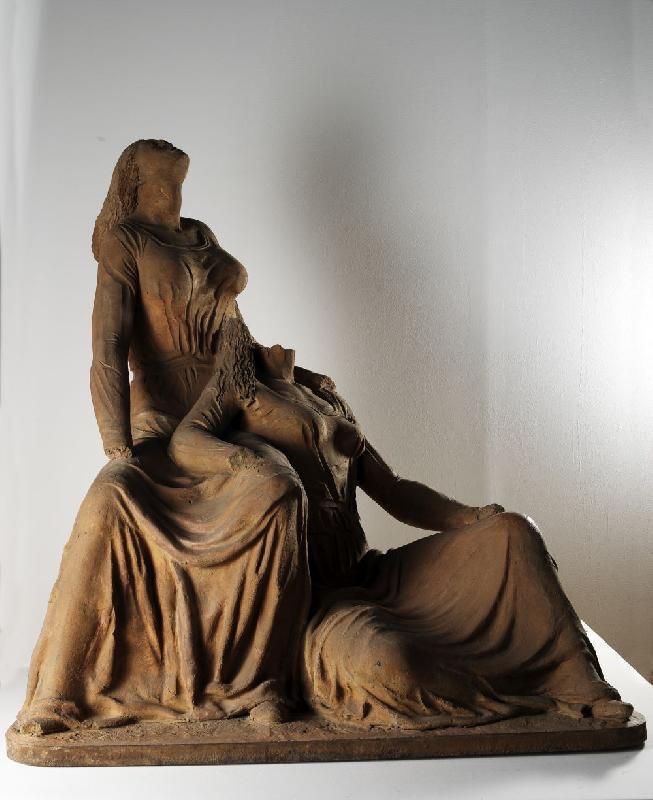
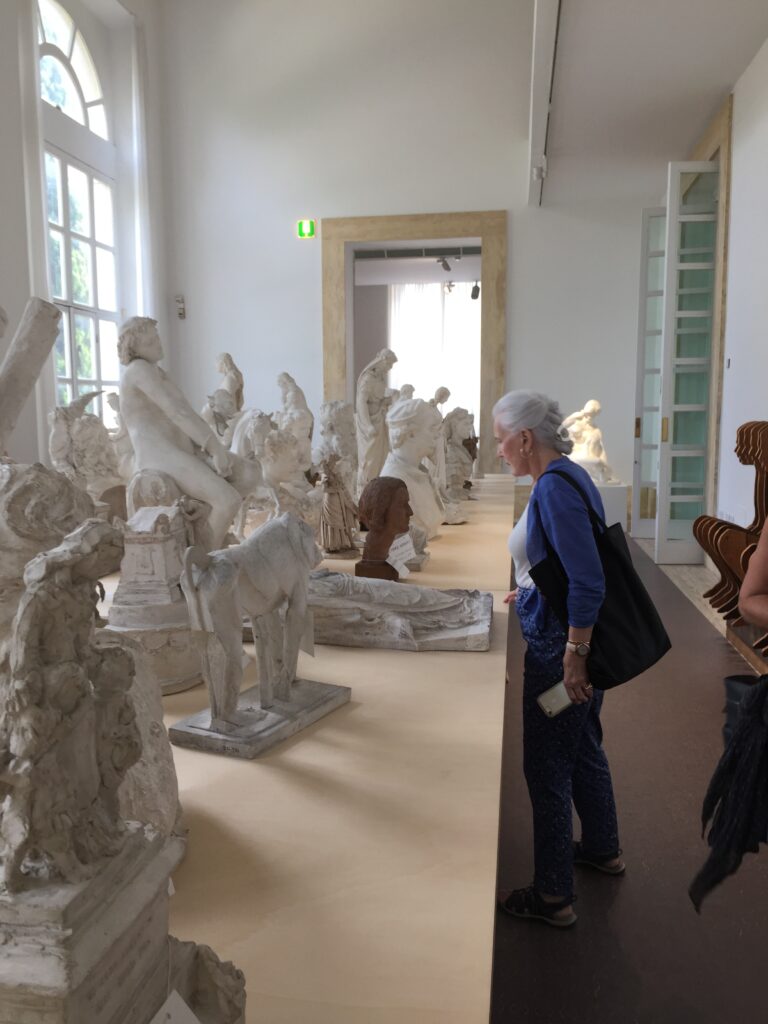
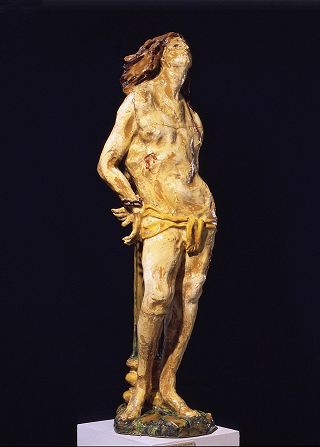
The last stop today transports you from the neo-classical period to the 21st century. The MAXXI Museo Nazionale delle arti del XXI secolo, designed by Zaha Hadid, opened to the public in 2010. A small permanent collection is enhanced by a broad array of more than a dozen temporary exhibitions.
Currently, the show of Italian transavanguardia artist Enzo Cucchi includes a selection of important ceramic works.
After a rest in your hotel, Il Tiberino on Tiber Island is the perfect place to enjoy the views of Rome by night (book a table outside) accompanied by traditional Roman fare and fine wines.

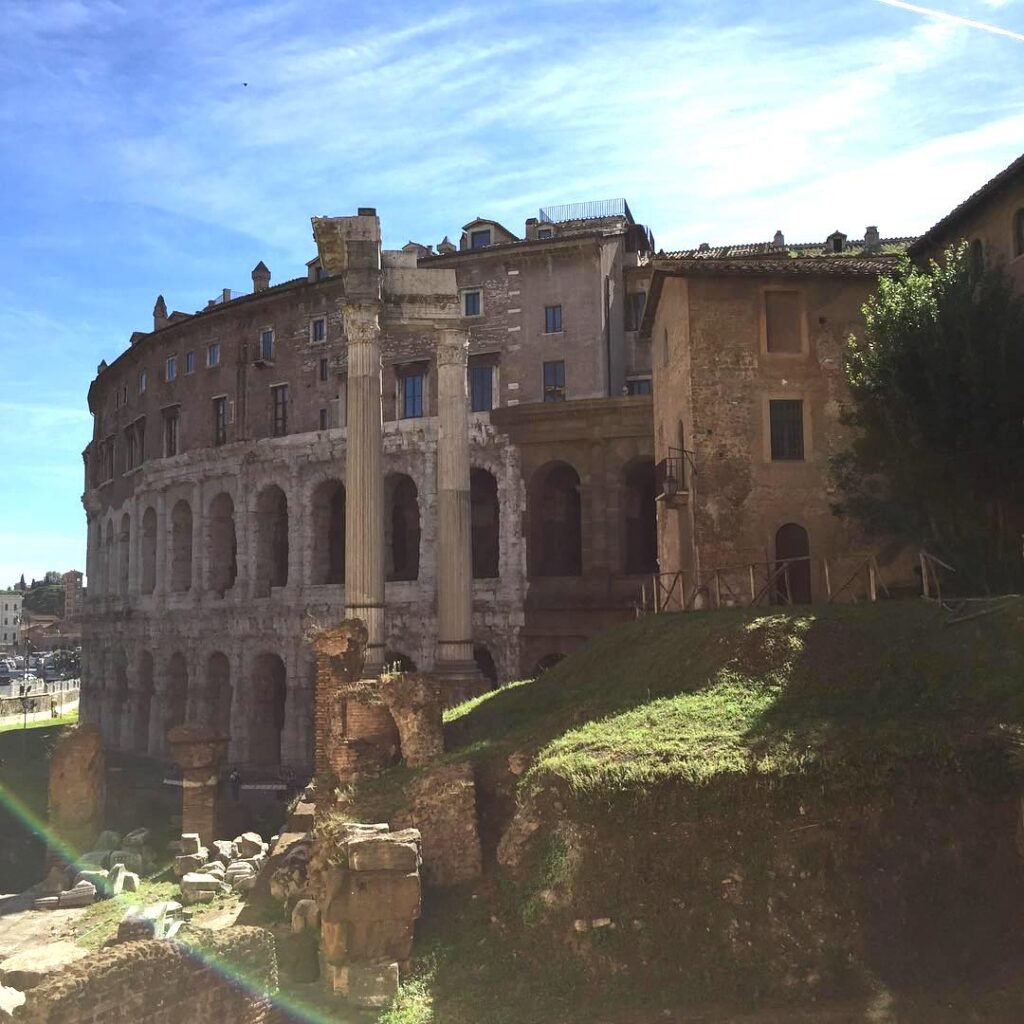
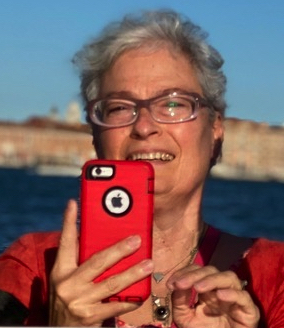
Lori-Ann Touchette is a classical archaeologist and art historian with degrees from Brown, Princeton, and Oxford Universities. She is the author and editor of articles and books on Greco-Roman art and 18th-century Grand Tour. She has also contributed articles to Ceramics: Art & Perception, Ceramics Technical, and Ceramics Ireland. In 2012, she co-founded CRETA Rome with the Italian artist Paolo Porelli.
